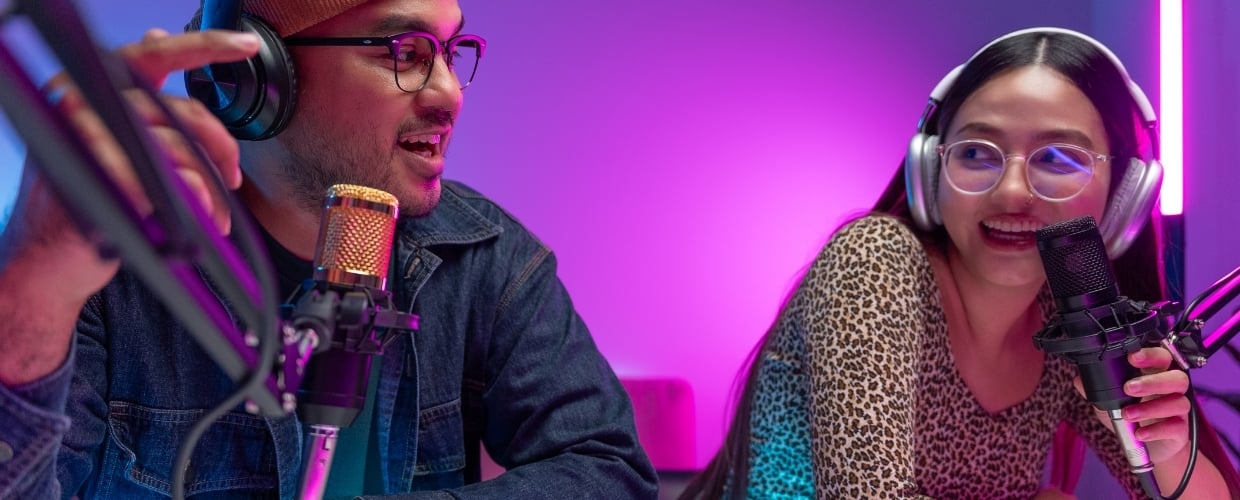At the outset of every PR and marketing campaign, creating buyer personas is a crucial step in understanding and engaging with your target audiences. In the B2B space, buyer personas are evolving right before our eyes, and those changes will require major adjustments to your content marketing strategy.
According to Forrester Research, B2B buying decisions are increasingly in the hands of Gen Z professionals. In many cases, those Gen Z decision-makers are navigating a B2B customer journey built for older generations, and it’s often a sub-par experience for them.
It’s no secret that the world of communications has changed drastically in recent years, with vastly different media formats, outlets, and social platforms preferred by different segments of the population. The Forrester report cites that 90% of younger B2B buyers are dissatisfied with the overall buying experience – mainly because the journey wasn’t built with them in mind.
Gen Z buyers will dominate the B2B market in the years ahead, and it’s time to start thinking about how your content strategy can serve their unique needs. Here are four ways to “future-proof” your B2B content strategy as key decision-makers get younger, faster, and more tech-savvy.
Develop a modular content strategy
Having grown up entirely in the era of digital and mobile media, Gen Z is fluent in cross-referencing content and research across several online channels. In other words, they are accustomed to putting several pieces of the puzzle together from disparate sources – customer reviews, social posts, competitive research, media coverage, and owned channels – instead of digging into a single long-form product guide or white paper.
However, while Gen Z gravitates toward short-form multimedia content, that doesn’t mean your entire content strategy should consist of TikTok videos. It’s important to develop a modular content strategy that clearly explains the real-world benefits of your brand and its products across several forms of media.
You’ll need a mix of short-form, long-form, visual, and written content to paint a complete picture of your brand, its values, and the real-world solutions you can provide. You don’t need to tell the whole story in each piece of content, but each piece of content across your owned, earned, and paid channels should be a compelling entry point for your bigger brand story.
You’ll still want to provide long-form, in-depth pieces of content about your product and its services, but for many Gen Z B2B buyers, reviewing those materials may come much later in the buying journey. Consider how the many pieces of your big-picture brand and product story can be conveyed via short-form videos, social posts, influencer partnerships, and active discussions on social channels.
Treat social channels as your “homepage”
“Meeting your audience where they are” is a fundamental part of any successful marketing strategy: You want to get your brand, messaging, and key value propositions in front of your target audience(s) via the outlets and platforms they use the most.
When it comes to Gen Z buyers, this means prioritizing your owned social channels and content.
As mentioned in the previous section, this doesn’t simply mean posting a link to your latest white paper on Instagram with a stock image of a business meeting. Instead, think of your social feeds as the most important way to bring your brand and your product benefits to life. It’s an increasingly important way to shine a spotlight on your values, your employees, your unique problem-solving skills, and your culture.
All of these elements should be at the heart of your modular content strategy on social media. Short, compelling, and social-friendly pieces of your brand and product story can be told via short videos, compelling infographics, authentic user and customer profiles, and the occasional dose of humor.
Don’t forget that social media is a two-way street: It’s not just a content-publishing mechanism, it’s an essential way to engage with your current and future customers via direct communication. Responding to comments, following potential customers, and engaging with relevant posts can increase your brand visibility and popularity on social media.
Video is a must-have, not a nice-to-have
Videos have become the preferred form of content online – not just for Gen Z, but for anyone with a web connection. That doesn’t mean all your content should be video, but it does mean that video is now an essential part of your B2B content strategy. The most important aspects of your brand story, your product benefits, and your messaging should always have a video component – or even several video components.
Just as “written content” can take various shapes and forms, it’s important to think of video as a diverse and multifaceted content format. Your overarching video strategy should embrace a mix of short-form and long-form pieces and approaches that best suit your owned, earned, and paid content channels.
For example, short-form videos can bring specific product benefits and features to life, and they’re best suited for social sharing and promotion. You may want to produce “vertical” versions of your shorter-form video content for sharing on TikTok and Instagram Reels.
Longer-form videos are better shared via platforms such as YouTube and Vimeo, and they can provide interviews, tutorials, and case studies that dive deeper into your product offerings and benefits.
Thoughtful planning and scripting can also make longer-form video content suitable for social sharing. Consider scripting and shooting longer videos so that 15-second, 30-second, and one-minute snippets can be easily cut out and shared as standalone short-form videos on social channels.
Make social influencers a primary media target
For many Gen Z buyers, partnerships, user testimonials, and organic reviews by social influencers are as impactful as reviews and placements in traditional media for older generations. Content creators who have millions of followers on social are just as important as your Tier 1 media targets.
Your social influencer strategy should be a natural extension of your overall media strategy. Just as different publications or news outlets are intended to target different segments of your target audience, different influencers with different content specialties can help expand the reach of your efforts.
When it comes to your influencer strategy, one buzzword is key: Authenticity. It’s important to ensure that your brand, product, and services are a natural fit for the influencer, not just a forced product placement.
Don’t shy away from “niche” influencers, either: The right partnership, sponsorship, or coverage target can create strong connections with smaller audiences that understand product benefits on a deeper level.
Conclusion
Rethinking your content strategy from the ground up can be intimidating, but the right PR and marketing partner can put your brand on the fast track to success.
The most efficient approach is to make small but powerful adjustments at the earliest stages of your content marketing strategy. From there, an expert partner with deep experience in content strategy, content development, media relations, video production, and social media strategy can ensure your brand story comes to life across owned, earned, and paid channels.
Airfoil’s versatile team has decades of experience helping brands navigate their own success in the headwinds of constant change. Let’s talk about how we can shape and optimize your B2B marketing strategy for increasingly complex audiences.





